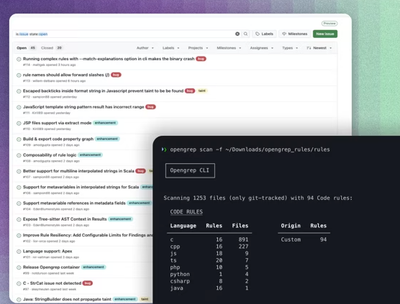
Research
Security News
Lazarus Strikes npm Again with New Wave of Malicious Packages
The Socket Research Team has discovered six new malicious npm packages linked to North Korea’s Lazarus Group, designed to steal credentials and deploy backdoors.
handlebars-layouts
Advanced tools
Handlebars helpers which implement Jade-like layout blocks.
With Node.js:
$ npm install handlebars-layouts
With Bower:
$ bower install handlebars-layouts
With Component:
$ component install shannonmoeller/handlebars-layouts
<!doctype html>
<html lang="en-us">
<head>
{{#block "head"}}
<title>{{title}}</title>
<link rel="stylesheet" href="assets/css/screen.css" />
{{/block}}
</head>
<body>
<div class="site">
<div class="site-hd" role="banner">
{{#block "header"}}
<h1>{{title}}</h1>
{{/block}}
</div>
<div class="site-bd" role="main">
{{#block "body"}}
<h2>Hello World</h2>
{{/block}}
</div>
<div class="site-ft" role="contentinfo">
{{#block "footer"}}
<small>© 2013</small>
{{/block}}
</div>
</div>
{{#block "foot"}}
<script src="assets/js/controllers/home.js"></script>
{{/block}}
</body>
</html>
{{#extend "layout"}}
{{#append "head"}}
<link rel="stylesheet" href="assets/css/home.css" />
{{/append}}
{{#replace "body"}}
<h2>Welcome Home</h2>
<ul>
{{#items}}
<li>{{.}}</li>
{{/items}}
</ul>
{{/replace}}
{{#prepend "foot"}}
<script src="assets/js/analytics.js"></script>
{{/prepend}}
{{/extend}}
// Load Handlebars
var Handlebars = require('handlebars');
// Register helpers
require('handlebars-layouts')(Handlebars);
// Register partials
Handlebars.registerPartial('layout', fs.readFileSync('layout.html', 'utf8'));
// Compile template
var template = Handlebars.compile(fs.readFileSync('template.html', 'uft8'));
// Render template
var output = template({
title: 'Layout Test',
items: [
'apple',
'orange',
'banana'
]
});
console.log(output);
<!doctype html>
<html lang="en-us">
<head>
<title>Layout Test</title>
<link rel="stylesheet" href="assets/css/screen.css" />
<link rel="stylesheet" href="assets/css/home.css" />
</head>
<body>
<div class="site">
<div class="site-hd" role="banner">
<h1>Layout Test</h1>
</div>
<div class="site-bd" role="main">
<h2>Welcome Home</h2>
<ul>
<li>apple</li>
<li>orange</li>
<li>banana</li>
</ul>
</div>
<div class="site-ft" role="contentinfo">
<small>© 2013</small>
</div>
</div>
<script src="assets/js/analytics.js"></script>
<script src="assets/js/controllers/home.js"></script>
</body>
</html>
$ npm test
MIT
0.3.0 - 0.3.1
Features:
FAQs
Handlebars helpers which implement layout blocks similar to Jade, Jinja, Nunjucks, Swig, and Twig.
The npm package handlebars-layouts receives a total of 82,628 weekly downloads. As such, handlebars-layouts popularity was classified as popular.
We found that handlebars-layouts demonstrated a not healthy version release cadence and project activity because the last version was released a year ago. It has 1 open source maintainer collaborating on the project.
Did you know?

Socket for GitHub automatically highlights issues in each pull request and monitors the health of all your open source dependencies. Discover the contents of your packages and block harmful activity before you install or update your dependencies.

Research
Security News
The Socket Research Team has discovered six new malicious npm packages linked to North Korea’s Lazarus Group, designed to steal credentials and deploy backdoors.

Security News
Socket CEO Feross Aboukhadijeh discusses the open web, open source security, and how Socket tackles software supply chain attacks on The Pair Program podcast.

Security News
Opengrep continues building momentum with the alpha release of its Playground tool, demonstrating the project's rapid evolution just two months after its initial launch.